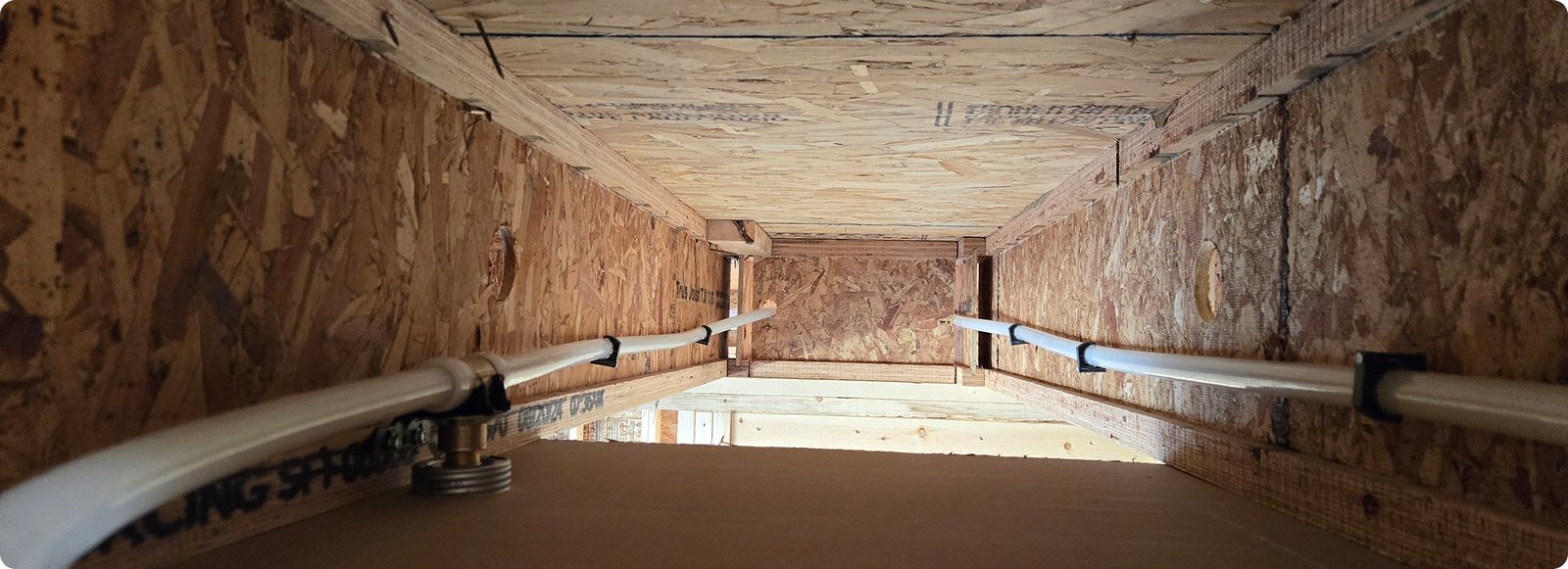Standalone Fire Sprinkler System
Definition
A system where the fire sprinkler network is separate from the domestic plumbing system.
Design Features
- Sprinkler pipes only supply water for fire suppression.
- Requires backflow prevention devices to avoid contamination due to stagnant water in the sprinkler lines.
- Must be designed to meet specific pressure requirements (typically less than 80 psi for PEX systems).
Advantages
- No Interference with Domestic Water Use: Operates independently of household plumbing.
- Compliance with Local Regulations: Backflow prevention ensures compliance with health and safety codes.
- Simpler Water Supply Calculation: System is designed solely for fire suppression needs.
Disadvantages
- Higher Costs: Separate piping and devices increase material and installation costs.
- Stagnant Water Risks: Stagnant water can cause bacterial growth or sediment buildup.
- Maintenance: Requires regular inspections and testing of backflow prevention devices.
Uponor AquaPEX Multipurpose Fire Sprinkler System
Definition
A combined system that integrates fire sprinklers with the domestic plumbing system, using the same water supply lines.
Design Features
- Uses flexible PEX tubing to supply water for both household use and fire sprinklers.
- Water flows regularly whenever a plumbing fixture is used, eliminating stagnation.
Advantages
- Cost-Effective: Eliminates the need for separate piping and backflow prevention devices.
- Reduced Maintenance: Regular water flow prevents stagnation.
- Verification of System Readiness: Plumbing use verifies water availability to sprinklers.
- Simpler Installation: Faster due to reduced material requirements.
Disadvantages
- Potential Interference: Heavy water use could reduce pressure during a fire event.
- Design Complexity: Requires careful planning to ensure sufficient flow and pressure.



